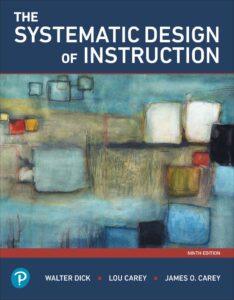By Brant Wilkerson-New
July 23, 2025
Clear language in the workplace often depends on the ability of a skilled technical writer to make complicated ideas easier to understand. Technical writing exists at the intersection of subject knowledge and clear communication, serving businesses, engineers, developers, and anyone else who needs to convey complex information.
But what exactly does “technical writing” mean? It’s not just about putting technical terms on paper. It’s the art and craft of transforming specialized topics into clear, concise, and useful documentation for people with specific needs.
What Is Technical Writing?
Technical writing is a specialized form of communication that focuses on conveying material in a way that is easy to read for a specific audience. The primary goal is to make technical or specialized topics accessible, actionable, and useful, regardless of the reader’s prior knowledge. This discipline bridges the gap between subject matter experts and end users, ensuring that everyone can understand and use the information provided.
Technical writing is not limited to the technology sector. It spans industries such as healthcare, engineering, finance, manufacturing, and education. Whenever there is a need to explain how something works, how to use a product, or how to follow a process, technical writing plays a crucial role.
What Sets Technical Writing Apart?
Technical writing is defined by its purpose: it turns complex information into documentation that’s structured and easy to digest for consumers. Whether it’s an instruction manual for a high-tech gadget or digital documents for software integration, technical writing uses specific skills to guide, inform, and instruct readers.
A few key characteristics set it apart from other writing disciplines:
- Clarity: Every word has a reason. Information is presented plainly, without unnecessary jargon or ambiguity. The technical writer’s job is to ensure that even the most intricate data easy to digest.
- Structure: Documents use headings, subheadings, bullet points, and numbered lists. Well-ordered content helps users find what they need quickly. A logical flow is essential, making it easy for readers to follow instructions or locate information.
- Precision: Technical writing avoids vague statements. Steps, cautions, and explanations are exact and based on facts. Precision ensures that readers can trust the information and act on it without confusion.
- Conciseness: Superfluous words are trimmed away. The focus is on necessary details the reader needs. Technical writing values brevity, ensuring that every sentence serves a purpose.
Unlike narrative writing, which wanders and evokes emotion, this form of writing gets straight to the point, making sure that users not only understand, but can act on what they read.
Why It Matters
Technical writing can mean the success or failure of a product, system, or project. Customers rely on technical documentation to assemble furniture, troubleshoot new software, implement API integrations, and comply with safety regulations.
Badly written instructions leave people frustrated. Good writing, by contrast, fosters smooth operations, safer work environments, and happier clients. When documents are clear and accurate, it reduces errors, saves time, and enhances the user experience.
Consider the following scenarios:
- A customer trying to assemble a piece of furniture relies on a user manual. If the instructions are unclear, they may assemble it incorrectly or give up in frustration.
- A software developer integrating a new API needs precise documents. If the writing is ambiguous, the integration may fail, causing project delays.
- Employees following standard operating procedures (SOPs) depend on clear steps to ensure safety and compliance. Poorly written SOPs can lead to accidents or regulatory violations.
In each case, this documentation plays a critical role in ensuring that information is communicated effectively and that users can achieve their goals with confidence.
Key Characteristics
To truly comprehend what makes this writing unique, let’s explore its defining features in more detail:
1. Audience Awareness
Technical writing is always tailored to a specific market. For instance, a user manual for a consumer gadget will use different language and explanations than an engineering specification for professionals.
2. Purpose-Driven Content
Every technical document has a clear purpose, whether it’s to instruct, inform, or persuade. The writing style, structure, and content are all shaped by this purpose.
3. Logical Organization
Technical writing is highly organized. Content is broken down into manageable sections, often with a table of contents, headings, and subheadings. This structure makes it easy for readers to scan and find what they need.
4. Use of Visuals
Technical writers often incorporate visuals such as diagrams, screenshots, tables, and flowcharts. These elements help clarify detailed information and make instructions easier to follow.
5. Consistency
Consistency in terminology, formatting, and voice is essential in technical writing. This ensures that readers are not confused by changing terms or inconsistent instructions.
6. Accessibility
Good writing is accessible to all users, including those with disabilities. This may involve using plain language, providing alternative text for images, and ensuring documents are compatible with assistive technologies.
Common Types of Technical Writing
Writers can specialize in different forms of technical writing depending on readers and purpose. The most common types include:
- User Manuals: These provide step-by-step instructions for operating devices, machinery, or software. User manuals are essential for helping customers get the most out of a product.
- Standard Operating Procedures (SOPs): SOPs clearly outline regular processes in an organization so tasks are performed consistently. They are critical for maintaining quality and safety standards.
- White Papers: These analytical reports explain new features, product benefits, or technological advances to inform decision-making or persuade stakeholders. White papers are often used in B2B marketing and sales.
- API Documentation: This includes technical reference material, sample code, and integration guides for developers using software APIs. Writing API docs is crucial for enabling third-party developers to build on a platform.
- Case Studies: These documents outline real-life use cases, showing how a product or solution delivered results. Case studies are powerful tools for demonstrating value to potential clients.
Each format relies on unique writing abilities and style, but all share the goal of making the material easier to digest.
Below is a table summarizing some core types and their uses:
| Type | Consumers | Purpose | Example |
| User Manuals | Product end-users | Help users operate or troubleshoot | Smartphone quick start guide |
| Standard Operating Procedures (SOPs) | Employees | Describe repeatable internal processes | Steps to safely shut down a factory machine |
| White Papers | Business decision-makers | Explain benefits/persuade with facts | White paper on cloud migration strategy |
| API Documentation | Software developers | Enable integration and development | API reference for payment gateway |
| Case Studies | Prospective clients, partners | Show real-world problems and solutions | Case study on reduced downtime through automation |
For more details on each type, see our dedicated service pages: User Manuals, Standard Operating Procedures (SOPs), White Papers, and API documents.
Real-World Technical Writing Examples
Technical writing comes to life in everyday documents we sometimes take for granted. Let’s look at actual examples and break down why they work.
User Manual
Imagine you’re setting up a new wireless router. The technical writer’s task? Distill endless technical specs into an easy-to-follow quick start guide. Here’s a short excerpt:
Step 1: Plug the router into a wall outlet using the provided power adapter.
Step 2: Connect the router’s WAN port to your modem with the included Ethernet cable.
Step 3: Wait for the power light to stop blinking before proceeding.
IMPORTANT: Do not turn off your modem during setup.
This writing sample shows clarity and sequence. Each instruction stands alone, with bolded titles and direct steps. Tips and warnings are called out, reducing errors and confusion.
SOP
Standard operating procedures codify tasks that must be performed consistently. For example, a laboratory might share an SOP for cleaning glassware:
Washing Process
a) Wear protective gloves.
b) Rinse all glassware under running tap water.
c) Apply lab detergent and scrub using a brush.
d) Rinse three times with distilled water.
e) Air dry on the drying rack.
Bullet points and numbering break down each task, making them easy to check off and follow even under stressful conditions.
White Paper
Suppose a company wants to demonstrate the effectiveness of its cybersecurity product. A technical writer produces a white paper:
“Data breaches rose by 19 percent in 2024. While businesses adopt more digital workflows, endpoint protection remains the weakest link. This paper examines how behavioral detection, combined with AI, has improved breach response time by 37 percent. Learn how GarfieldSecurity’s algorithm adapts in real-time, staying ahead of evolving threats.”
One of the better technical writing examples, white papers blend technical details and business insights, using clean sentences and statistics to make a persuasive case.
API Documentation
Software developers often rely on clear API documents. Here’s a sample endpoint description:
POST /api/v2/users Creates a new user in your account.
Parameters: (string, required): User’s email address. (string, optional): User’s full name.
Sample Request:Sample Response:
Case Study
A manufacturer may share a case study on using industrial automation:
“ABC Manufacturing reduced machine downtime by 45% after integrating SmartMaintenance sensors. The sensors detected predictive failures, saving $200,000 in the first year. Maintenance manager John Smith reported, ‘We’ve never seen this level of reliability.'”
Stories backed by data in your writing make abstract technical improvements much more relatable and memorable.
Visual Elements
A technical writer often adds visuals:
- Screenshots to show software steps.
- Diagrams for system overviews.
- Flowcharts to outline processes.
- Tables to compare technical specs.
For instance, a user manual might contain photos of equipment labeled with numbered steps, matching the instructions. In software documents, annotated screenshots highlight where to click. The best writing uses both words and pictures to create documents that are easier to comprehend.
The Role of Technical Writing Skills
Mastering technical writing requires strong grammar, a logical mind, and empathy for people who may know far less about the topic than the writer. Below are some tips for better writing:
- Write for your actual reader, not for yourself or another expert.
- Use short sentences, active voice, and familiar words whenever possible.
- Organize content so users can scan and search easily.
- Check your facts, run tests on instructions, and update often.
- Pair written instructions with visuals for clarity.
- Always review and revise with the reader in mind.
Technical writers also use technical writing tools like Grammarly, MadCap Flare, and Snagit to create, test, and polish their work. These technical tools help ensure consistency, accuracy, and clarity across all documents.
Industries
Technical writing is not a one-size-fits-all discipline, The format and content can vary significantly depending on the industry and the intended audience. Here are a few examples of how writing is applied in certain fields, each with their own technical aspects:
Healthcare
In healthcare, writing includes creating patient leaflets, medical device manuals, clinical study reports, and regulatory submission documents. Accuracy and clarity are paramount in writing these documents, as they impact patient safety and regulatory compliance.
Engineering
Engineers rely on writing for specifications, design documents, maintenance manuals, and safety procedures. The writing must be precise and detailed to ensure that complex technical systems are built and maintained correctly.
Software Development
Writers in software development produce user guides, API documents, release notes, and online help systems. Their work enables users and developers to use technical software products effectively.
Manufacturing
Manufacturing companies use writing for equipment manuals, SOPs, quality assurance documents, and training materials. Clear documents ensure that these technical products are made consistently and safely.
Finance
In finance, writing includes policy documents, compliance manuals, and process documents. These documents help organizations meet stringent technical regulatory requirements and maintain transparency.
The Process
Creating effective documents involves several key steps:
- Research: The writer gathers info from subject matter experts, product specifications, and existing documents.
- Planning: The writer defines the document’s purpose, target, and structure.
- Drafting: The first draft is created, with writing focusing on clarity, accuracy, and logical flow.
- Review: Subject-matter experts and stakeholders review the draft to ensure the writing is accurate.
- Editing: The writer revises the document for clarity, consistency, and readability.
- Testing: Instructions and procedures are tested to ensure they are easy to follow and accurate.
- Publishing: The final document is formatted and published in the appropriate medium (print, web, PDF, etc.).
- Maintenance: Technical documents are updated regularly to reflect changes in products, processes, or regulations.
How Technical Writing Services Help
Outsourcing writing can be a smart move for companies rolling out new features, products, or software. Skilled technical writers use a proven process to translate complicated material into easy-to-read content.
Technical writing services cover everything from writing user manuals and SOPs to creating detailed API documentation and business case studies. Experts in the field document processes, describe new features, and ensure technical content is accessible to every user.
Organizations looking to ensure their product or document stands out for clarity, accuracy, and usability can engage professional technical writing services for that specialized support.
The Future of Technical Writing
As technology evolves, so does technical writing. The rise of artificial intelligence, machine learning, and automation is changing the way technical documents are created and consumed. Interactive documents, video tutorials, and chatbots are becoming more common, providing users with new ways to access knowledge.
Technical writers must adapt to these changes by learning new tools and techniques. The demand for technical writing skills is expected to grow as organizations recognize the value of clear, accurate, and user-friendly documents.
Key Takeaways
- Technical writing is about transforming specialized info into clear, structured, and useful documents.
- It stands apart from other writing examples through its unique characteristics: clarity, structure, precision, and conciseness.
- Common types of technical writing include user manuals, SOPs, white papers, API documents, and case studies, each targeting specific readers and goals.
- Visual aids such as screenshots, diagrams, and tables can make technical writing easier to follow.
- Good writing isn’t just a skill; it’s an essential business function that can improve customer satisfaction, reduce mistakes, and support innovation.
- Writing skills are valuable across industries, from healthcare and engineering to software and finance.
- Outsourcing writing services can help organizations ensure their docs are clear, accurate, and effective for all readers, technical and non-technical alike.
Whether it’s user manuals, SOPs, or API documents, TimelyText’s consultants deliver clear, concise content that gets results. Contact us today to elevate your documentation!
- About the Author
- Latest Posts
I’m a storyteller!
Exactly how I’ve told stories has changed through the years, going from writing college basketball analysis in the pages of a newspaper to now, telling the stories of the people of TimelyText. Nowadays, that means helping a talented technical writer land a new gig by laying out their skills, or even a quick blog post about a neat project one of our instructional designers is finishing in pharma.






